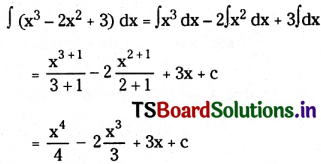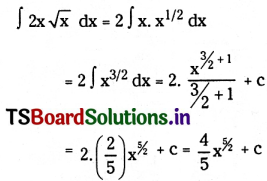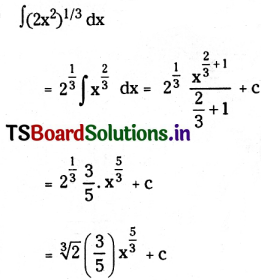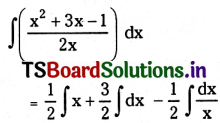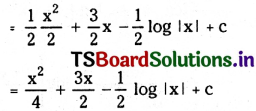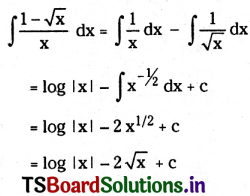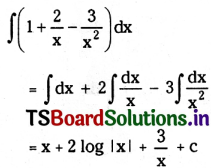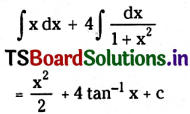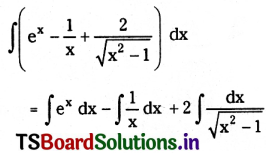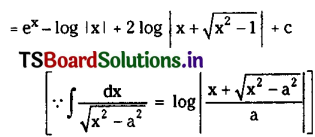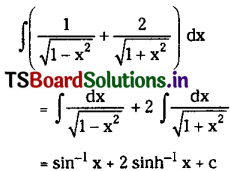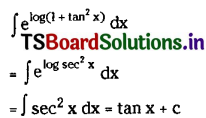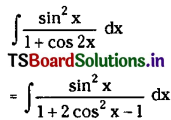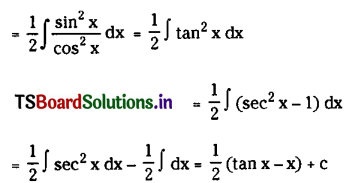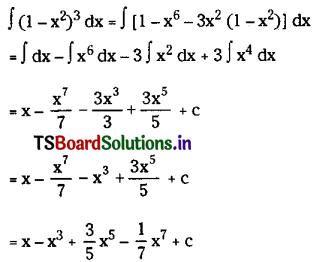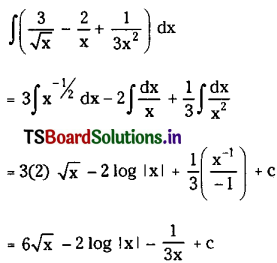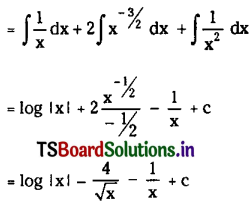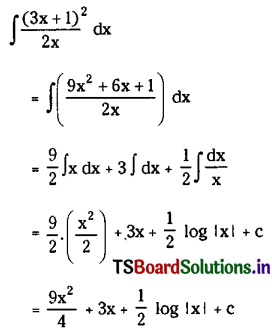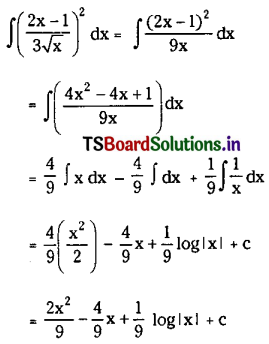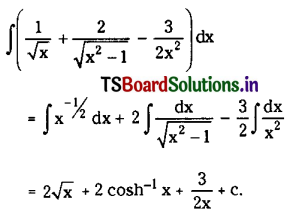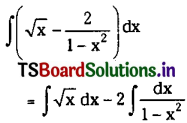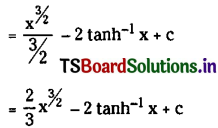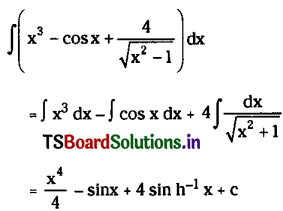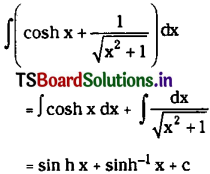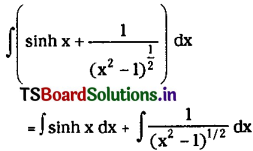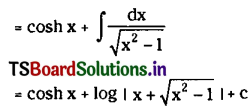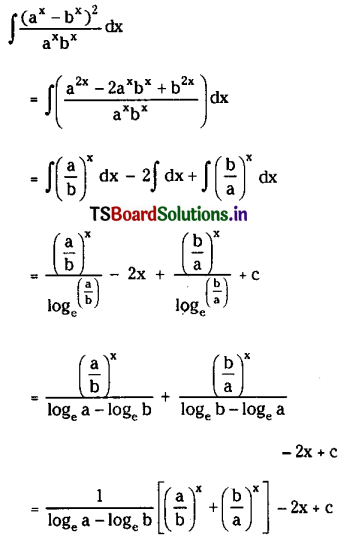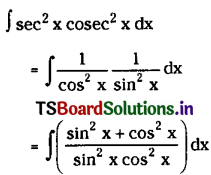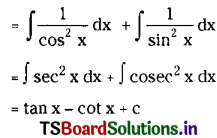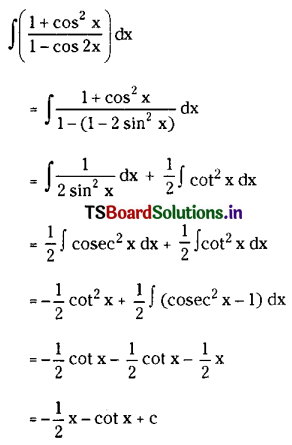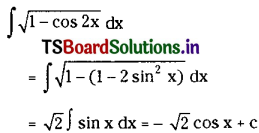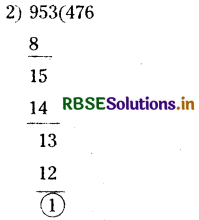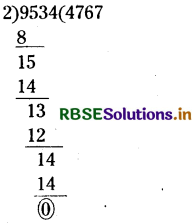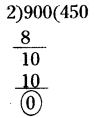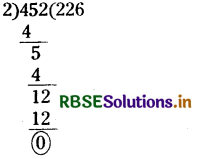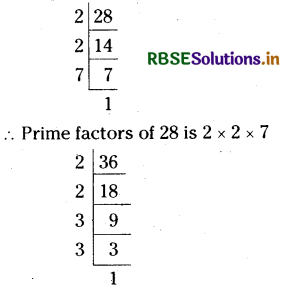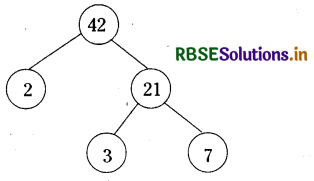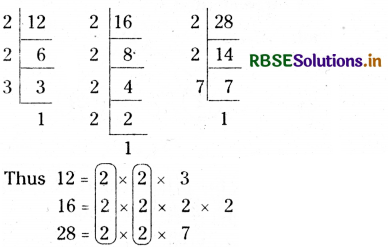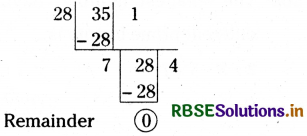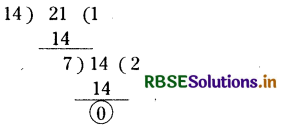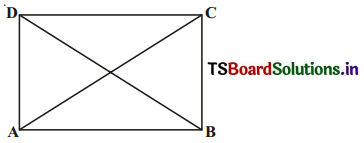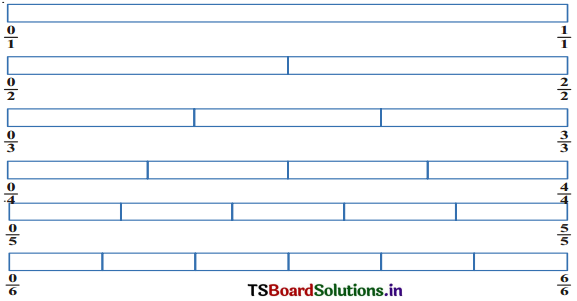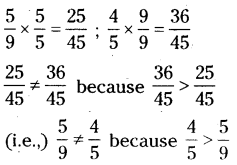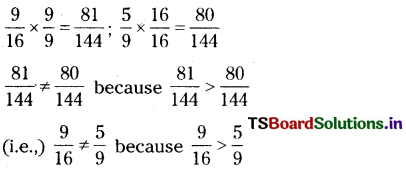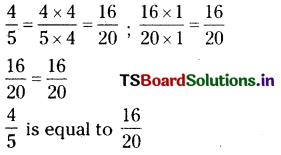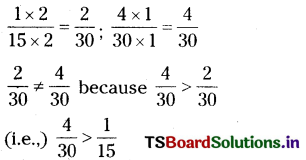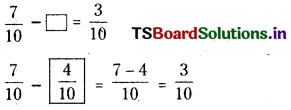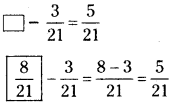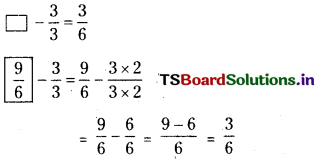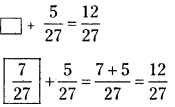Students can practice TS 10th Class Maths Solutions Chapter 2 Sets InText Questions to get the best methods of solving problems.
TS 10th Class Maths Solutions Chapter 2 Sets InText Questions
Do This
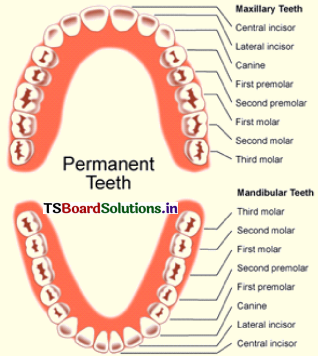
Question 1.
List the teeth under each of the following type.
i) Incisors
Solution:
Central incisors = 4
Lateral incisors = 4

Total incisors = 8
ii) Canines
Solution:
Total Canines = 4
iii) Pre-molars
Solution:
First premolars = 4
Second premolars = 4

Total premolars = 8
iv) Molars
Solution:
First molars = 4
Second molars = 4
Third molars = 4

Total molars = 12
Question 2.
Identify and write the “common property” of the following collections. (Page No. 26)
1) 2, 4, 6, 8 ….
2) 3, 5, 7, 11, ….
3) 1, 4, 9, 16, ………
4) January, February, March, April,………..
5) Thumb, index finger, middle finger, ring finger, pinky.
Solution:
1) For given integers 2, 4, 6, 8 …….. 2n, n = 1, 2, 3, 4,…. is any positive integer.
2) 2, 3, 5, 7, 11, …. prime numbers.
3) For given integers 1, 4, 9, 16, …. n2, where ‘n’ is any positive integer and square of the numbers.
4) January, February, March, April,…. months of the every year.
5) Thumb, index finger, middle finger, ring finger, pinky fingers of the human hand.

Question 3.
Write the following sets. (Page No. 27)
1) Set of the first five positive integers.
2) Set of multiples of 5 which are more than 100 and less than 125.
3) Set of first five cubic numbers.
4) Set of digits in the Ramanujan number.
Solution:
1) { + 1, +2, +3, +4, +5}
2) {105, 110, 115, 120}
3) {1, 8, 27, 64,125} = {13, 23, 33, 43, 53}
4) Ramanujan Number = 1729. So the set = {1, 2, 7, 9}
Question 4.
Some numbers are given below. Decide the numbers to which number sets they belong to and does not belong to and express with correct symbols. (Page No. 27)
i) 1
ii) 0
iii) -4
iv) \(\frac{5}{6}\)
v) \(\text { 1. } \overline{3}\)
vi) \(\sqrt{2}\)
vii) log 2
viii) 0.03
ix) π
x) \(\sqrt{-4}\)
Solution:
Set of natural numbers = N
set of integers = Z
Set of rational numbers = Q
Set of real numbers = R
i) 1 ∈ (N, Z, Q, R}
ii) 0 ∉ N, 0 ∈ {Z, Q, R}
iii) -4 ∉ N, -4 ∈ (Z, Q, R}
iv) \(\frac{5}{6}\) ∉ (N, Z} But \(\frac{5}{6}\) ∈ {Q, R}
v) \(1 . \overline{3}\) ∉ {N, Z} But \(1 . \overline{3}\) ∈ {Q, R}
vi) \(\sqrt{2}\) ∉ {N, Z} But \(\sqrt{2}\) ∈ {Q, R}
vii) log2 ∉ N,Z But log 2 ∈ {Q, R}
viii) 0.03 ∉ {N, Z}But 0.03 ∈ {Q, R}
ix) π ∉ {N, Z} But π ∈ (Q, R}
x) \(\sqrt{-4}\) ∉ (N, Z, Q} But \(\sqrt{-4}\) ∈ R.

Question 5.
List the elements of the following sets.
i) G = {all the factors of 20}
ii) F = {the multiples of 4 between 17 and 61 which are divisible by 7}
iii) S = {x : x is a letter in the word MADAM’}
iv) P = {x : x is a whole number between 3.5 and 6.7} (Page No. 29)
Answer:
i) G = {1, 2, 4, 5, 10, 20}
ii) Multiples of 4 between 17 and 61.
x = {20, 24, 28, 32, 36, 40, 44, 48, 52, 56, 60}
F = {28, 56}
iii) S = {M, D, A}
iv) P = {4, 5, 6}
Question 6.
Write the following sets in the roaster form. (Page No. 29)
i) B is the set of all months in a year having 30 days.
ii) P is the set of all prime numbers less than 10.
iii) X is the set of colours of the rainbow.
Answer:
i) B = {April, June, September, November}
ii) P = {2, 3, 5, 7}
iii) X = {Violet, Indigo, Blue, Green, Yellow, Orange, Red}
Question 7.
A is the set of factors of 12. Which one of the following is not a member of A ? (Page No. 29)
A) 1
B) 4
C) 5
D) 12
Answer:
[C]
Think – Discuss
Question 1.
Observe the following collections and prepare as many as generalised statements you can describing their more properties. (Page No. 26)
i) 2, 4, 6, 8, ….
ii) 1, 4, 9, 16
Answer:
i) 3, 6, 9, 12, ….
Property : multiples of 3.
ii) 1, 8, 27, 64,….
Property : cube of the numbers, i.e., 13, 23, 33, 43, ….

Question 2.
Can you write the set of rational numbers listing elements in it ? (Page No. 28)
Solution:
No
Try This
Question 1.
Write some sets of your choice, involving algebraic and geometrical ideas. (Page No. 29)
Answer:
1) The natural number greater than three and less than twelve.
2) A two digit number such that the sum of its digits is 8.
3) The set of quadrilaterals.
4) The set of all triangles in a plane.
Question 2.
Match roaster forms with the set builder form.
i) {P, R, I, N, C, A, L}
ii) {0}
iii) {1, 2, 3, 6, 9, 18}
iv) {3, -3} (Page No. 29)
a) {x : x is a positive integer and is a divisor of 18}
b) {x : x is an integer and x2 – 9 = 0}
c) {x : x is an integer and x + 1 = 1}
d) {x: x is a letter of the word PRINCIPAL}
Answer:
i) d
ii) c
iii) a
iv) b
Do This
Question 1.
A = {1, 2, 3, 4}, B = {2, 4}, C = {1, 2, 3, 4, 7}, F = { } (Page No. 33)
Fill in the blanks with ⊂ or ⊄.
i) A………B
ii) C……..A
iii) B……..A
iv) A……..C
v) B……..C
vi) F……B
Answer:
i) A⊄B
ii) C⊄A
iii) B⊂A
iv) A⊂C
v) B⊂C
vi) F⊂B
Question 2.
State which of the following statements are true. (Page No. 33)
i) { } = ϕ
ii) ϕ = 0
iii) 0 = {ϕ}
Answer:
i) True (T)
ii) False (F)
iii) False (F)
Question 3.
Let A = {1, 3, 7, 8} and B = {2, 4, 7, 9}. Find A∩B.(Page No. 37)
Solution:
Given sets
A = {1, 3, 7, 8} and B = {2, 4, 7, 9}
A ∩ B = {1, 3, 7, 8} ∩ {2, 4, 7, 9}
= {7}
Question 4.
If A = {6, 9, 11}; ϕ = { }, find A ∪ ϕ. (Page No. 37)
Solution:
Given sets A = {6, 9, 11} and B = {2, 4, 7, 9}
A ∪ ϕ = {6, 9, 11} ∪ {ϕ}
= {6, 9, 11} = A
∴ A ∪ ϕ = A

Question 5.
A = {1, 2, 3, 4, 5, 6, 7, 8, 9, 10};
B = {2, 3, 5, 7}. Find A ∩ B. (Page No. 37) (June ’15(AP))
Solution:
Given sets A = {1, 2, 3, 4, 5, 6, 7, 8, 9, 10} and B = {2, 3, 5, 7}
A ∩ B = {1, 2, 3, 4, 5, 6, 7, 8, 9, 10} ∩ {2, 3, 5, 7}
= {2, 3, 5, 7} = B
∴ A ∩ B = B
Question 6.
If A = {4, 5, 6}; B = {7, 8}, then show that A ∪ B = B ∪ A. (Page No. 37)
Solution:
Given sets are
A = (4, 5, 6} and B = (7, 8}
A ∪ B = {4, 5, 6} ∪ {7, 8}
= {4, 5, 6, 7, 8}
B ∪ A = {7, 8} ∪ {4, 5, 6}
= {4, 5, 6, 7, 8}
∴ A ∪ B = B ∪ A
Question 7.
If A = {1, 2, 3, 4, 5}; B = {4, 5, 6, 7} then find A-B and B-A. Are they equal ? (Page No. 38)
Solution:
Given sets are A = {1, 2, 3, 4, 5} and B = {4, 5, 6, 7}
A – B = {1, 2, 3, 4, 5} – {4, 5, 6, 7} = {1, 2, 3}
B – A = {4, 5, 6, 7} – {1, 2, 3, 4, 5} = {6, 7}
No, A – B ≠ B – A
Question 8.
If V = {a, e, i, o, u} and B = {a, i, k, u}, find V – B and B – V. (Page No. 38)
Solution:
Given sets are
V = {a, e, i, o, u} and B = {a, i, k, u}
V – B = {a, e, i, o, u} – {a, i, k, u}
= {e, o}
B – V = {a, i, k, u} – {a, e, i, o, u}
= {k}
Try This
Question 1.
A = {set of quadrilaterals}, B = {square, rectangle, trapezium, rhombus}
State whether
A ⊂ B or B ⊂ A. Justify your answer. (Page No. 33)
Answer:
A ⊄ B
B ⊂ A every element of B is also an element of A.
Question 2.
If A = {a, b, c, d}. How many subsets does the set A have? (Remember null set and equal sets). (Page No. 33)
A) 5
B) 6
C) 16
D) 65
Solution:
A = {a, b, c, d}
Subsets of A = {a}, {b}, {c}, {d};
n(A) = 4
Number of subsets for a set, which is having ‘n’ elements is 2n.
So n(A) = 4
Number of subsets for A is 24 =16.
Answer:
(C)
Question 3.
P is the set of factors 5, Q is the set of factors of 25 and R is the set of factors of 125.
Which one of the following is false?
A) P ⊂ Q
B) Q ⊂ R
C) R ⊂ P
D) P ⊂ R (Page No. 33)
Solution:
P = {1, 5}
Q = {1, 5, 25}
R = {1, 5, 25, 125}
Answer:
(C)

Question 4.
A is the set of prime numbers less than 10, B is the set of odd numbers < 10 and C is the set of even numbers < 10. How many of the following statements are true ? (Page No. 33)
i) A ⊂ B
ii) B ⊂ A
iii) A ⊂ C
iv) C ⊂ A
v) B ⊂ C
vi) X ⊂ A
Solution:
A = {2, 3, 5, 7}
B = {1, 3, 5, 7, 9}
C = {2, 4, 6, 8}
The given all statements are false.
Question 5.
List out some sets A and B and choose their elements such that A and B are disjoint. (Page No. 37)
Solution:
A and B are disjoint sets.
i) A = {2, 3, 5} B = {4, 6, 8}
ii) A = {1, 2, 3} B = {4, 5, 6}
iii) A = {1, 3, 5, 7} B = {2, 4, 6, 8}
Question 6
If A = {2, 3, 5}, find A∪ϕ and ϕ∪A and compare. (Page No. 37)
Solution:
A = {2, 3, 5}; ϕ = { }
A∪ϕ = {2, 3, 5} ∪ { } = {2, 3, 5}
ϕ∪A = { } ∪ {2, 3, 5} = {2, 3, 5}
∴ A∪ϕ = ϕ∪A
Question 7.
If A = {1, 2, 3, 4}; B = {1, 2, 3, 4, 5, 6, 7, 8} then find A ∪ B, A ∩ B. What do you notice about the result ? (Pg. No. 37)
Solution:
A = {1, 2, 3, 4};
B = {1, 2, 3, 4, 5, 6, 7, 8}
A∪B = {1, 2, 3, 4} ∪ {1, 2, 3, 4, 5, 6, 7, 8} = {1, 2, 3, 4, 5, 6, 7, 8}
The common elements in both A and B sets are 1, 2, 3, 4.
A∩B = {1, 2, 3, 4}
Result :
i) A∪B = B
ii) A∩B = A
iii) A ∩ B ⊂ A ∪ B
Question 8.
A = {1, 2, 3, 4, 5, 6}; B = {2, 4, 6, 8, 10}. Find the intersection of A and B. (Page No. 37)
Solution:
A = {1, 2, 3, 4, 5, 6}
B = {2, 4, 6, 8, 10}
The common elements in both A and B are 2, 4, 6.
∴ A ∩ B = {2, 4, 6}
Think : Discuss
Question 1.
Is empty set subset to every set? (Page No. 34)
Solution:
Yes.

Question 2.
Is any set subset to itself? (Page No. 34)
Solution:
Yes.
Question 3.
You are given two sets such that a set is not a subset of the other. If you have to prove this, how do you prove ? Justify your answers. (Page No. 34)
Solution:
The above statement is true only in the two sets does not have common elements.
Ex : A = {1, 2, 3}; B = {4, 5, 6}
So, A⊊B.
Question 4.
The intersection of any two disjoint sets is a null set. Justify your answer. (Page No. 37)
Answer:
Yes, this statement is true because A ∩ B = ϕ when A and B are disjoint sets.
Question 5.
The sets A – B, B – A and A ∩ B are mutually disjoint sets. Use examples to observe if this is true. (Page No. 38)
Solution:
Let the sets are
A = {1, 2, 3, 4} and B = {5, 6, 7, 8}
A – B = {1, 2, 3, 4} – {5, 6, 7, 8} = {1, 2, 3, 4}
B – A = {5, 6, 7, 8} – {1, 2, 3, 4} = {5, 6, 7, 8}
A ∩ B = {1, 2, 3, 4} ∩ {5, 6, 7, 8} = { } = ϕ
∴ A – B, B – A and A ∩ B are disjoint sets.
Do This
Question 1.
Which of the following are empty sets? Justify your answer. (Page No. 44)
i) Set of integers which lie between 2 and 3.
ii) Set of natural numbers that are less than 1.
iii)Set of odd numbers that have remainder zero, when divided by 2.
Answer:
i) This is null set. We know that there is no integer that lie between 2 and 3.
ii) This is also a null set. We know that there is natural number less than ‘1’.
iii) This is a null set. We know that odd numbers do not leave remainder zero when divided by 2.
Question 2.
State which of the following sets are finite and which are infinite. Give reasons for your answers.
i) A = {x: x ∈ N and x < 100}
ii) B = {x : x ∈ N and x ≤ 5}
iii)C = {12, 22, 32, ………… )
iv)D = {1, 2, 3, 4)
v) {x : x is a day of the week) (Page No. 44)
Answer:
i) A = {1, 2, 3, ………., 98, 99}
This set is finite, because there are 99 numbers possible to count.
ii) B = {1, 2, 3. 4, 5}
This set is finite, because there are 5 numbers possible to count.
iii) C = {12, 22, 32,………)
This set is infinite, because there are infinite numbers.
iv) D = {1, 2, 3, 4}
This set is finite because there are 4 numbers that are possible to count.
v) E = {Sunday, Monday, Tuesday, Wednesday, Thursday, Friday, Saturday)
This set is finite, because there are 7 days in a week possible to count.

Question 3.
Tick the set which is infinite
A) The set of whole numbers < 10
B) The set of prime numbers < 10
C) The set of integers < 10
D) The set of factors of 10 (Page No. 44)
Answer:
[C]
The set of integers < 10
{……., -2, -1, 0, 1, 2, 3, 4, 5, 6, 7, 8, 9}
Try This
Question 1.
Which of the following sets are empty sets? Justify your answer.
i) A = {x : x2 = 4 and 3x = 9}
ii) The set of all triangles in a plane having the sum of their three angles less than 180. (Page No. 44)
Answer:
i) Empty set.
To satisfy these equations same x value is not possible.
ii) Empty set.
The sum of the three angles of a triangle is equal to 180°.
Question 2.
B = {x : x + 5 = 5} is not an emptyset. Why? (Page No. 44)
Solution:
x + 5 = 5
x = 5 – 5
x = 0
For x = 0 it is true
Only one element is there.
So it is not an empty set.
Think — Discuss
Question 1.
An empty set is a finite set. Is this statement true or false? Why? (Page No. 44)
Answer:
Yes, it is a finite set because there is finite number i.e., ‘0’ elements it consists.
Question 2.
What is the relation between n(A), n(B), n(A ∩ B) and n (A ∪ B)? (Page No. 45)
Solution:
n(A) = elements in set A, n(B) = elements in set B
n(A ∩ B) = set of all elements which are common to both A and B.
n(A ∪ B) = elements in set A and set B (or) union of sets A and B.
n(A ∪ B) = n(A) + n(B) – n(A ∩ B)

Question 3.
If A and B are disjoint sets, then how can you find n(A ∪ B)? (Page No. 45)
Solution:
n(A) = elements in set A.
n(B) = elements in set B.
n(A ∩ B) = elements in set A and set B
Here it is ‘0’ (∴ A and B are disjoint sets)
n(A ∪ B) = elements in set A or set B.
∴ n(A ∪ B) = n(A) ÷ n(B) – n(A ∩ B)
= n(A) + n(B) – 0
= n(A) + n(B).
![]()
![]()
![]()


![]()


